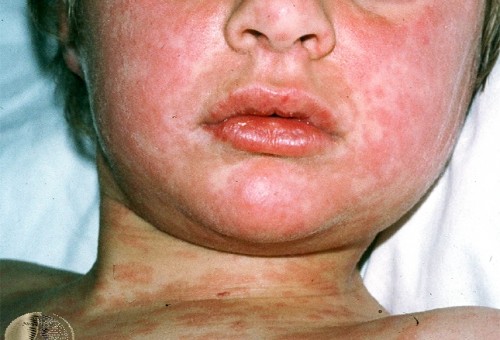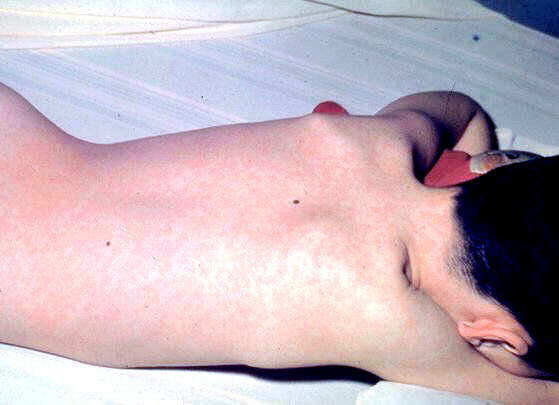Measles: The Real Evidence
This year (2015) the U.S. has suffered a huge increase in Measles. An increase unlike any other in recent years! The blame for much of it has been directly placed at the feet of California residents who exercised a “personal belief” exemption in the state’s childhood immunization requirements.
Unimmunized child with measles rashAnd much of it involved visitors to a theme park where a child, ill with the measles, was taken on a vacation exposing hundreds of other visitors.
Now after 6 months we’ve pieced together many facts and statistics about the massive public health effort undertaken to control the spread of this virulent disease and can summarize them for you.
Return of Measles Disease
The recent epidemic beginning in California was not the only epidemic seen in recent years, just the one receiving the widest amount of press coverage – due to its relation to a theme park; or, perhaps, because it’s the straw that broke the camel’s back.
London-New York City
In March 2013 an intentionally unvaccinated 17-year-old from New York City visited London and contracted measles. After the teen returned home and began spreading his illness, a total of 58 cases of measles were identified in two orthodox Jewish communities with low rates of vaccination. Moreover, officials from the New York City Department of Health and Mental Hygiene (DOHMH) traced 3500 contacts and documented 6 generations (person-to-person spread) of infection.
No cases occurred in vaccinated people but, significantly, 21% of the cases were in infants who were too young for the recommended measles/mumps/rubella [MMR] vaccine.
Anaheim California
The California Department of Public Health received its first notification about a suspected measles case on January 5, 2015. The index case was an unvaccinated 11-year-old child. Also on January 5, the California Department of Public Health received reports about four additional suspected measles cases, along with two reports from Utah; all of the persons had visited a California theme park complex during the period of December 17 through December 20, 2015. By February 11, 2015, there were 125 confirmed cases of measles in the United States, and 110 of those children (88%) were from California.
Approximately one third of the children had visited one of the theme parks, 31% were secondary cases, and 34% had measles from an unknown exposure. Of the secondary cases, 76% were household or close contacts of known cases. Eight additional children were exposed in community settings. Cases related to theme park exposure were found in seven other states; in addition, there was one case in Mexico and 10 cases in Canada.
Among the 110 children from California, 45% were not vaccinated, but 12 were infants and too young to be vaccinated. This meant that 34% of the California patients were unvaccinated but eligible for vaccine. An additional 5% had received only one dose of the vaccine. Two thirds of those eligible California children were unvaccinated owing to personal beliefs. Approximately 20% of the children for whom complete healthcare data could be verified were hospitalized.
Measles Resource Links
The internet is rife with half-baked assumptions, misleading agendas and outright lies. Here is a collection of links to definitive, unbiased information from responsible and reputable sources.
“Red Book” of the American Academy of Pediatrics (AAP) – the updated recommendations to physicians for diagnosing, treating and preventing measles. It was “pre-released” due to the urgency of the epidemic.
“Frequently Asked Questions (FAQ) at the Center for Disease Control (CDC) – Well written summary of the latest research and recommendations to the public.
“Information for professionals from the Center for Disease Control (CDC) – Extensive advice to physicians about treating patients during the measles epidemics.
“Patient Information from the Journal of the American Medical Association (JAMA) – Similar to that of the CDC, a list of advice to patients about the diagnosis and treatment of Measles.
Slowly, as public concern grows over the recrudescence of this virulent disease, vaccine proponents are becoming as vocal as the objectors. Logical reason must prevail and not the disproven, unreasoned hysteria perpetuated by a few special interest groups.
12 Posts in Immunizations (immunizationSafety) Series
- The vaccine strategy (video) – 20 Jun 2017
- 10 reasons parents choose not to immunize – 6 Jun 2017
- Immunization v. Vaccination: Vaccine-Hater Cottage Industry – 31 May 2017
- Immunization v. Vaccination: How we got in this mess – 27 May 2017
- Vaccine-preventable diseases coming back – 30 Apr 2017
- Return of Measles Disease – 22 Jun 2015
- Decision not to immunize nearly killed their son – 11 Jun 2015
- Measles Outbreak in unvaccinated – 18 May 2014
- Autism and Immunization Link Debunked... Again – 30 Mar 2013
- Immunization Safety Research – 30 Jan 2013
- Wakefield Immunization Fraud – 29 Jan 2013
- Immunization Safety Series: Intro/Index – 28 Jan 2012



